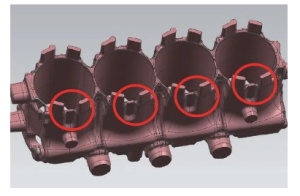Revolutionizing Prototyping
Advances in 3D printing have turned the world of prototyping on its head within many industries, significantly reducing the amount of time and money required to develop and improve products. Manufacturing the traditional means can take weeks or even months to produce a single prototype, resulting in valuable human capital and material costs. By comparison, 3D printing gives businesses the ability to create prototypes within hours or days, which reduces this process from idea to testing. For example, companies in automotive have stated a 50% reduction in costs for parts compared to traditional parts, and machine speed has provided a lead-time from months to days for prototyping.
Allowing the Creation of Stress-proof Modifications
A key advantage of 3D printing is it can produce competition-defying complexity at no extra cost compared to conventional manufacturing. For instance, in healthcare, it has enabled mass personalization, allowing implants and prosthetic devices to be designed to conform to the unique anatomical specifications of individual patients. e.g., in orthopedics, a surgeon could use a 3D printed bone structure to help plan and practice the surgery, meaning the patient may have a more successful recovery.
Reduce Costs and Increase Efficiency
The company is likewise famous for its efficiency, its ability to take out expenses involved in manufacturing and supply. 3D printing also reduces the reliance on inventory and moves production closer to where the parts are needed, reducing shipping costs and lead times. For instance, 3D printing is employed by aerospace firms to manufacture parts for airframes more quickly and with less weight than those manufactured with traditional machining processes, translating directly to improved fuel efficiency and lower operating costs. The technology is said to slash material waste by 90% compared to traditional subtractive manufacturing processes.

Advancing Material Science
A leader in material science innovation, 3D printing makes it possible to use previously unfeasible materials in traditional manufacturing processes. However, today, thanks to the promise of 3D printing a wide array of materials with different properties — such as temperature resistance or flexibility — industries can now print multiple materials in a single session. This is especially powerful in areas such as aerospace and automotive, where the performance characteristics of materials — specifically their weight, strength, and thermal resistance — reign supreme.
Disrupting Construction and Architecture
Industries such as construction and architecture are going through somewhat of a revival due to 3D printing, permitting them to carry out the construction of intricate, custom-built structures that are built in just a fraction of the overall cost and time to that of traditional building methods. Tell us, how is 3D printing advancing the field of architecture, our go-to experts can now quickly create intricate scale models in a fraction of the time? As a result, some firms such as those in the construction industry are testing building 3D printing to print entire buildings in order to decrease wasted material and labour cost while speeding construction.
Influencing Education or Study
Today, educational and research institutions often use 3D printing for learning, creativity, and innovation. 3D printing provides students and researchers the capability to create, prototype, and test new concepts quickly and affordably, and more importantly, a hands-on practical way to learn that engages the creative and problem-solving aspects of their brain. Meanwhile, universities are telling us they are using 3D printing to create custom replicas of unique artifacts and anatomical parts for study in subjects other than engineering and design, such as archaeology and biology, so that original specimens are not damaged or destroyed in the process.
In a word, 3D printing is not only a reformative technology but also a revolution that drives the development of 3D printing technology through promoting prototyping, customizing, lower price, newer material research, reforming construction, and molding education and research. With this technology advancing, its influence around these and other industries is now becoming even stronger – proving to be significant as part of the modern manufacturing and production environments.